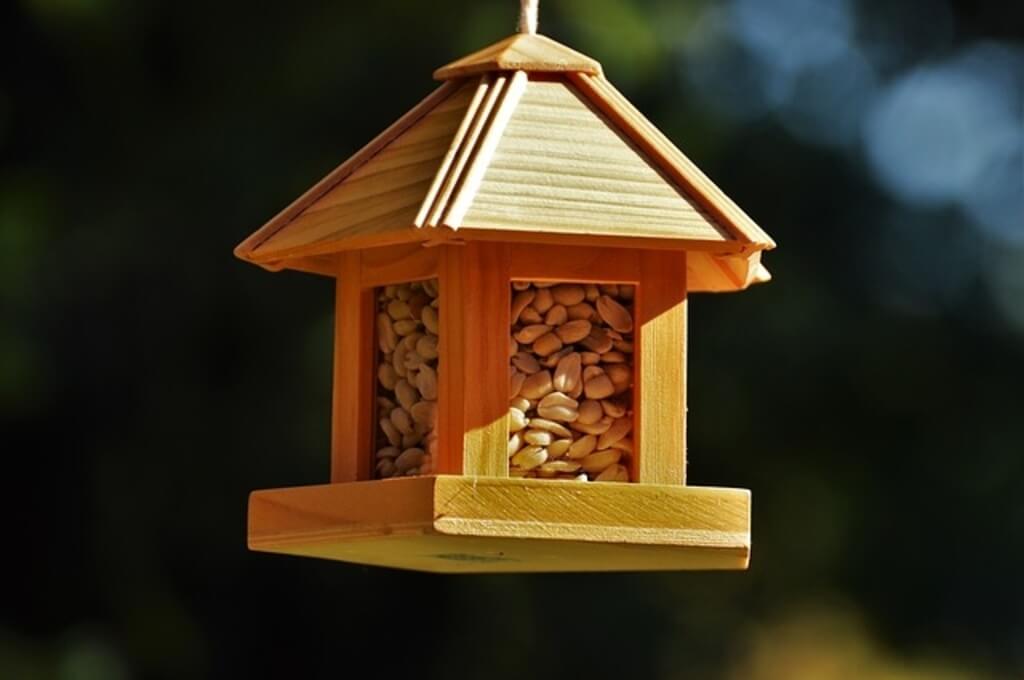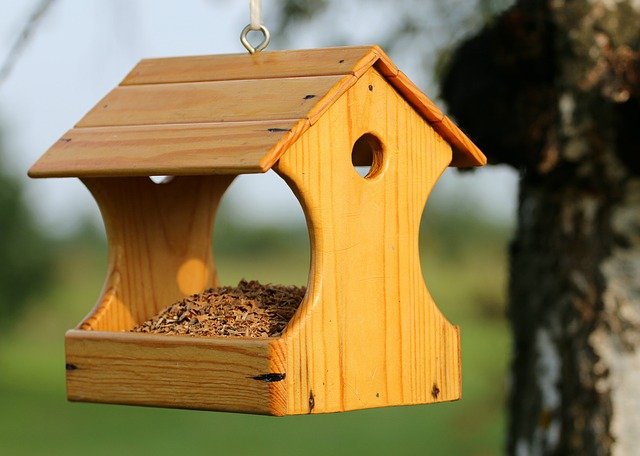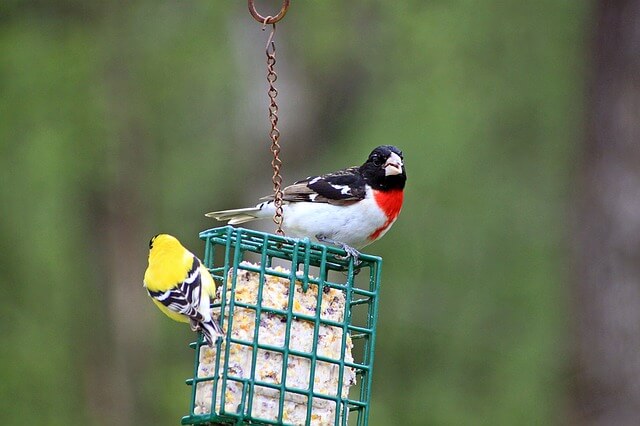
Welcome to our guide on creating a bird-friendly haven right in your backyard. Whether you’re a seasoned bird enthusiast or just starting out, this blog will equip you with practical tips and insights to effortlessly draw feathered friends to your brand-new bird feeder. Let’s dive into the wonderful world of bird watching and discover how to make your garden a favorite hangout spot for a variety of beautiful birds!”
Table of Contents
- 1 How To Attract Birds To A New Bird Feeder
- 1.1 Choose a Large Squirrel-Proof Bird Feeder
- 1.2 Feed the Birds the Right Type of Food
- 1.3 Backyard Bird Information Tool
- 1.4 Keep Your Feeders Clean and Fresh
- 1.5 Add a Roof to Your Feeder, Or Risk Missing Out on Some Birds.
- 1.6 Choose a Good Location for Your Feeder
- 1.7 Arrange Perches and Nest Boxes
- 1.8 Provide Water in an Open Container
- 1.9 Select Welcoming Plants for Your Yard
- 1.10 Use Food Attractants Such as Seed Mixtures or Suet Cakes
- 1.11 Avoid Feeding Areas Near Pesticides, Insecticides, or Herbicides
- 1.12 Feed the Birds Early in the Morning
- 1.13 Control Pests and Predators Around Your Feeder
- 1.14 Disguise Your Feeder for a Natural Look
- 2 Conclusion
- 3 Author
How To Attract Birds To A New Bird Feeder
Choose a Large Squirrel-Proof Bird Feeder
Don’t waste your money on a small feeder that the squirrels will knock over. Try one of these large, tough squirrel proof bird feeders. The birds will be glad you did! The large Classic Squirrel Resistant Bird Feeder can easily accommodate larger birds such as cardinals, blue jays, and woodpeckers!
Special perches close if a squirrel lands on the feeder, keeping them off your seed. Steel construction is durable and squirrel-resistant. The enclosed seed ports make it impossible for squirrels to jump in or open the feeding ports.
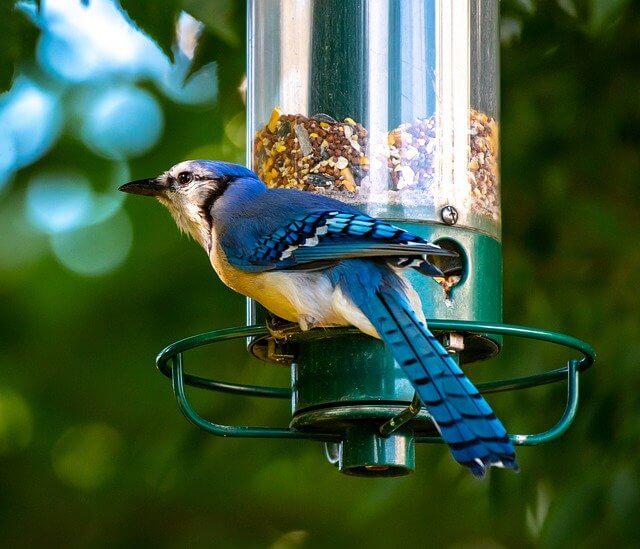
Feed the Birds the Right Type of Food
Wild birds’ stomachs are very sensitive and they cannot break down high-fat or protein foods. They need a specially formulated seed mix that includes plenty of seeds, sprouted corn, and millet. Ensure you feed them the right food to keep them healthy!
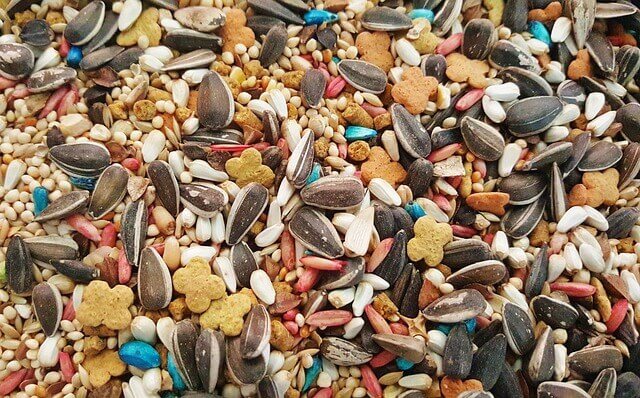
Niger Seed – Niger seed is mainly made up of fat and protein and is best used for birds that are in the process of molting. This makes it a great food for the times when birds are growing or preparing for migration, and also good for birds in their growth stages.
Sunflower – Sunflower contains seeds, so is best used for birds that love to chew. This makes it a great food for the times when birds are nesting or just building new nests.
Cracked Corn – Cracked corn is a staple food for backyard birds. Cracked corn is rich in both protein and fiber, which are the two most important nutrients for maintaining a healthy bird diet. It also provides extra calories to help keep your feathered friends warm during cold winter months. A typical cracked corn recipe will include 1/2 cup of cracked corn, 3 tablespoons of peanut butter, 2 teaspoons of olive oil, and some cinnamon or other spices if desired. Mix these ingredients together with enough water.
Fruit – A great way to attract birds to a new feeder is with fresh fruits, such as grapes, raisins, blueberries, cherries, blackberries, apricots, nectarines, peaches, plums, currants, cranberries, apples, and even oranges. These fruits will not only provide the right food for the bird, but also increase your chances of attracting more than one type of bird species at once.
Black Oil Sunflower Seeds – For decades, bird enthusiasts have been struggling to attract the widest variety of birds possible to their backyard feeders. The key is in black-oil sunflower seeds. These particular seed types are the only ones available that can successfully attract more than 400 different species of small birds to your feeder.
Mealworms – A common misconception is that all birds eat seeds. Mealworms are a great way to supplement your bird feeder with protein, fat, and vitamins that many species of birds require. Mealworms may be more palatable for some backyard birds than seed alone. By serving mealworms as well as seeds, you can increase the diversity of birds in your yard while providing them with the necessary nutrients for healthy growth and development.
Millet – If you’re looking for a good seed to attract birds, look no further than white millet. White millet is easy-to-find birdseed that will attract cardinals, juncos, sparrows, doves, and towhees. This inexpensive seed can be found at most feed stores or large grocery stores in the wild bird section of the store. The best time to put out your millet is just before dusk so it’s ready when hungry birds come.
Hulled Sunflower Seeds – Hulled Sunflower seeds are a popular snack for backyard birds, but they’re not the only ones that enjoy them. The shells are easy to clean up and there’s no mess to worry about. Hulled sunflower is becoming more popular because it provides a lot of seeds with less work on your part. Birds will eat hulled sunflower just as readily as unshelled, so you can enjoy all the benefits without having to deal with messy clean-up after the party is over!
Oats – Oats are a healthy, yummy treat for birds. Most birds enjoy eating uncooked oats. A key to using oatmeal as bird food is that it must be cooked and dried before putting in the feeder. Oats can attract many types of birds including bluebirds, sparrows, chickadees, cardinals, and titmice. Feeding them this tasty snack will help them stay healthier during cold winter months when they need more fat reserves to survive.
Peanut Hearts – There are a number of ways to attract birds with peanut hearts. One way is to put the peanuts in bird feeders. Peanut hearts are the perfect treat for all of your favorite backyard birds. They attract a wide variety of species that will flock to your feeders. Peanuts are very high in fat which makes them an excellent food source during the winter months when many other natural foods become scarce.
Shelled Peanuts – Birds will often be attracted to your bird feeder, but there are times when they just don’t seem interested. One of the reasons for this is that you may not have a wide variety of foods to offer them. A great way to attract birds to your bird feeder is by adding shelled peanuts. They’re also a good source of protein and fats, which makes them an excellent addition to any diet. Shelled peanuts provide another food option for birds who eat sunflower seeds.
Safflower Seed – Safflower seed is a great way to attract birds to your feeder. You can use it in a feeder or sprinkle it on the ground for birds that don’t perch. Safflower seeds are smaller than other seed options, so they’re perfect for those of us who don’t want to fill our feeders with larger, more expensive types of birdseed.
Suet – There are many types of food for backyard bird feeders, but one of the most popular is suet. Suet can be used all year round, but it’s especially important in the fall and winter months, when other foods are scarce. If you’re looking to attract more birds to your backyard bird feeder this season, try adding some suet!
Backyard Bird Information Tool
Use this tool to learn more about common backyard birds. Select a species from the drop-down menu to see information about the proper feeder and food type, as well as some interesting facts about the bird.
| Feeder | |
|---|---|
| Food | |
| Facts |
Keep Your Feeders Clean and Fresh
One of the easiest things you can do to bring beauty and joy into your garden is to provide food for birds. To keep them coming back, however, you have to keep your bird feeders clean and fresh. A bird feeder should be filled at least once a week.
Freshwater daily. Clean feeders every 3-4 days. Manually empty and clean your bird feeder weekly. Wash the pole or mounting hardware with a mild detergent. Use warm water and a soft brush to remove seeds from trays.
Give your feathered friends healthy food by removing stale seeds. Birds will be happy you did!
*Tip – Tie a small dab of peanut butter on the end of a toothpick and place it into the hollow area of the feeder. This works as a magnet to attract additional birds.
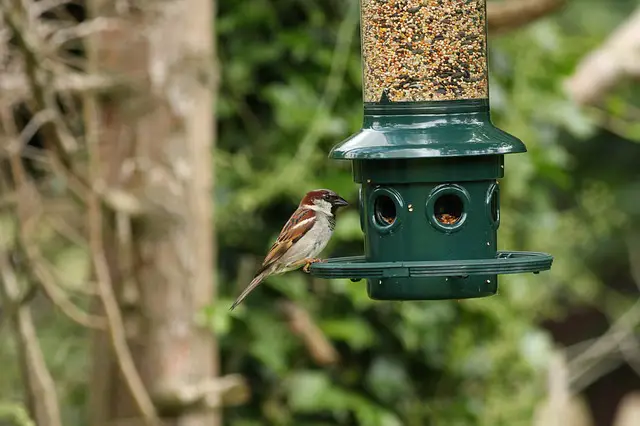
Add a Roof to Your Feeder, Or Risk Missing Out on Some Birds.
A bird feeder can bring nature into your backyard, but if it’s not kept dry, the benefits of feeding wild birds will diminish. If there is no way for rainwater to drain away from the feeder location then put up a roof or screen so water doesn’t drip onto seed trays below.
If it rains on them and their food, then you might be missing out on some of your favorite feathered friends. To prevent this from happening, a roof or shelter is needed to keep the rain off of them and their food supply.
One of the most popular ways is with metal screening. A metal screening is an excellent option because it doesn’t rot and will keep the rain out for years. It’s easy to attach with just some nails and screws. ; there are also creative ideas such as boot boxes or even plywood if you’re feeling crafty!
A screened-in area will protect your birdseed from squirrels who might try to steal it while providing a dry place for birds to perch. Don’t forget that you have birds who live in your area that come to feeders all year long. They may not come back if they are too wet and uncomfortable.
Choose a Good Location for Your Feeder
Feeding wild birds can be a great hobby, but it is important to keep safety in mind. The most common way for feeders to get knocked down is by heavy winds or rainstorms. This can lead to the seed getting wet and moldy which not only harms the birds but also spreads disease throughout their environment.
To help protect your bird friends from these hazards, try hanging your feeder near trees and brush that they can use for both shelter and nesting material. Birds like blue jays, woodpeckers, chickadees, and titmice are very territorial when it comes to defending their nests.
These birds will dive-bomb a human in order to protect their nest so make sure you hang the feeder high enough so they cannot reach it with ease. Some birds prefer higher perches than others.
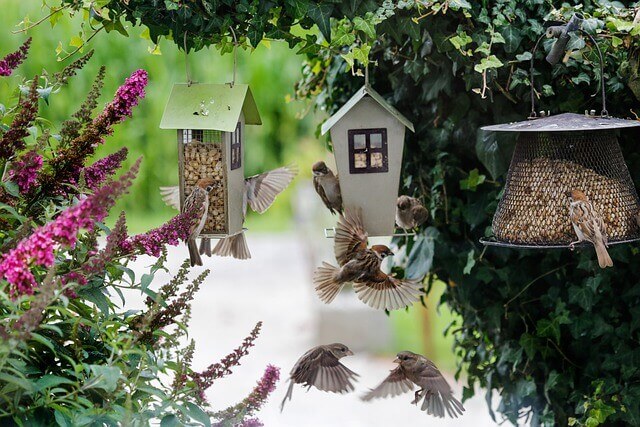
Arrange Perches and Nest Boxes
Birds love to come and feed on a bird feeder, but they also need a place to perch. Providing an area for birds to land and rest will encourage them to stay longer at your feeder. Perches should be placed around the feeding area in front of the food or on the opposite side if there is no room in front of it.
The perches should be mounted on branches that extend away from the ground so that all different types of birds can use them. It is important that these areas be sheltered from predators as well as the elements, like rain and wind.
Nest boxes should also be placed in several different locations so they have a variety of places to choose from, and should be arranged away from heavy traffic areas and corners that may feel too dark or closed off.
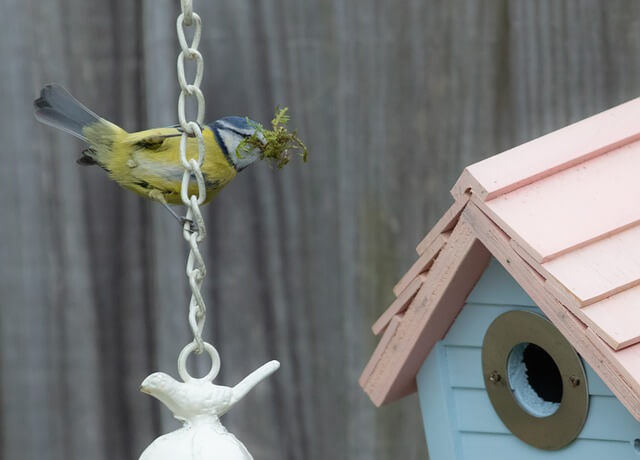
Provide Water in an Open Container
A bird feeder is not the only way to attract birds. One of the best ways to attract birds is with dripping water. Birds love the sound of moving water and find it calming. They will flock to your house for this refreshing drink, as well as a clean place to bathe and wash their feathers.
Putting out water in an open container is a great way to bring more birds into your yard. One of the best ways to attract birds is with dripping water.
Birds love the sound of moving water and find it refreshing. Bird Baths, Drip fountains, sprinklers, or even just a small dish filled with water will do the trick!
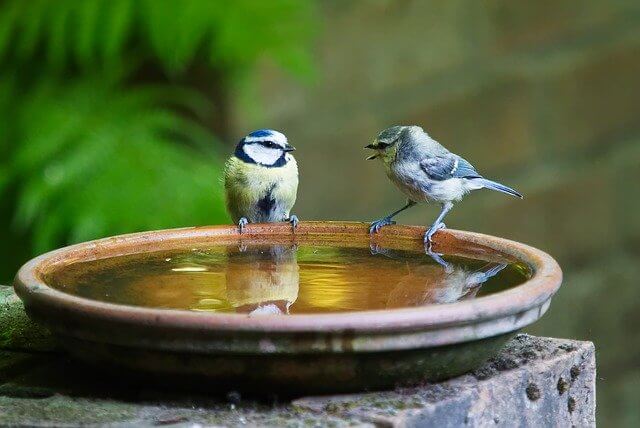
Select Welcoming Plants for Your Yard
Many homeowners like to include plants in their yards that will attract birds. Here are some of the best choices for your yard. Nectar producing flowers, such as petunias and lantanas, will attract hummingbirds and butterflies to your garden
Birds are attracted to trees with berries or fruit; consider planting crab apples, elderberries, blackberries, or blueberries.
Blue Jays and Cardinals will stop by if you have sunflowers or morning glory vines growing near their feeders.
Hummingbirds like dahlias and columbines best of all–a mix of both is a great idea. Cherry trees are attractive because they produce fruit and flowers, which attract many types of birds including woodpeckers, robins, titmice, and wrens.
Fruit trees are also a good choice because they produce fruit that is attractive to many types of birds including blue jays, cardinals, mockingbirds, robins, and finches.
Use Food Attractants Such as Seed Mixtures or Suet Cakes
Mixed seeds and suet feeders are an excellent way to attract a variety of birds. Most birdseed is just one type of seed, such as sunflower or millet. This can cause certain types of birds to stay away because they don’t like that particular type of seed.
Suet is made from animal fat and will help lure in more insect-eating birds like woodpeckers, nuthatches, chickadees, titmice, and kinglets.
Avoid Feeding Areas Near Pesticides, Insecticides, or Herbicides
Many people enjoy feeding birds in their backyards. However, it is important to avoid feeding areas near fertilizers, pesticides, or herbicides because these can all be lethal to all birds.
One of the most common things that we see are lawns that have been sprayed with weed killer and fertilizer a few days before they were scheduled for mowing.
It might seem like an odd place to feed birds but the chemicals from the pesticide will stay on the grass for a while.
Feeding areas near fertilizers, pesticides, or herbicides can be lethal to all birds because these substances are harmful to the health of all animals.
Feed the Birds Early in the Morning
It’s important to feed the birds early in the morning when the sun is out. Birds will flock to your feeder, not only because they are hungry but also because it gives them a chance to warm up before taking flight for food and water.
In addition, if you want a variety of species at your birdfeeder, then an early morning feeding is perfect! You’ll see cardinals, chickadees, woodpeckers, and more!

Control Pests and Predators Around Your Feeder
Wire fencing is a great way to protect your bird feeder from predators. Adding wire fencing around the perimeter of the bird feeder will prevent birds from becoming an easy dinner for predators like raccoons, opossums, and other animals. Wire fencing can be found at any hardware store and it is relatively inexpensive.
Disguise Your Feeder for a Natural Look
Birds can be picky eaters. The way that they view their surroundings may make them hesitant to come near your feeder. You can trick them into eating by disguising the feeder.
One easy way is by disguising your bird feeder with some tree leaves and branches or even flowers so that it blends in with its surroundings and makes it more difficult for predators to find it.
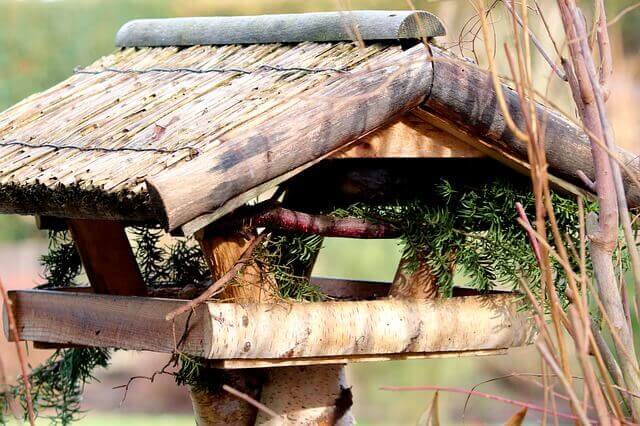
Conclusion
In conclusion, attracting birds to your new feeder is both an art and a science. By providing the right food, keeping the feeder clean and fresh, choosing a strategic location, and considering additional elements like perches and water sources, you can create an inviting environment for a variety of bird species.
Remember to avoid harmful chemicals and consider adding natural elements like plants to enhance the attractiveness of your feeding area. With these tips, you’ll soon enjoy the beauty and joy of birds visiting your yard year-round. Happy birdwatching!
Related Post: How to Set up a Bird Feeder in your Yard? (Easy Guide)

